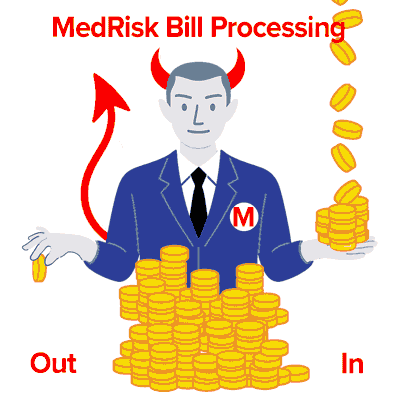E/M: Not the PTP? How to Bill for Required Reports

For Evaluation and Management (E/M) in California workers’ comp, Primary Treating Physicians (PTP) must submit with the bill a progress report using either the PR-2 form, or the narrative equivalent. The PR-2, or “Primary Treating Physician’s Progress Report,” is meant to record the treatment furnished to the injured worker. The PTP is reimbursed for completing the PR-2 when the PTP submits California-specific code WC002.
But what if you’re not the PTP? Secondary treating physicians may not use WC002 (or any other code) to bill directly for such reports. YET, the California Division of Workers’ Compensation (DWC) Billing and Payment Guidelines require secondary treating physicians to submit a report in order to receive payment for E/M services. In other words, secondary treating physicians bear the same progress reporting requirements as their PTP counterparts for E/M services — but without the right to receive payment for the report itself.
The good news: there’s a way around this billing disparity between PTP and secondary treating physicians for E/M reports.
Secondary Treating Physicians and E/M Report
The California Code of Regulations Section 9785 defines a secondary treating physician as:
...any physician other than the primary treating physician who examines or provides treatment to the employee, but is not primarily responsible for continuing management of the care of the employee.
Other than certain restrictions regarding chiropractors, it’s as simple as that. And as an attendee at our recent Q&A webinar pointed out, secondary treating physicians expend just as much time and effort on required E/M reporting as their PTP counterparts.
However, the PR-2, or “Primary Treating Physician’s Progress Report” is only a reimbursable requirement for PTP’s. Even the narrative equivalent of a PR-2 report, according to §9785, must be entitled “Primary Treating Physician’s Progress Report.”
So what’s a non-PTP to do?
Fortunately, the new rules for Evaluation and Management (E/M) billing offer a solution to secondary treating physicians: simply bill for E/M services by time.
Time-Based E/M Coding Allows For Reporting
Since a major update to California’s Official Medical Fee Schedule (OMFS), providers may bill for E/M services based solely on the amount of time spent rendering the E/M services. This means that progress reporting — regardless of whether it’s by a primary or secondary treating physician — may be accounted for with time-based coding.
Specifically, Providers may count both face-to-face and non-face-to-face E/M services towards the total billable time of the encounter. Those services include:
- Preparing to see the patient (e.g., review of tests)
- Obtaining and/or reviewing separately obtained history
- Performing a medically appropriate examination and/or evaluation
- Counseling and educating the patient/family/caregiver
- Ordering medications, tests, or procedures
- Referring and communicating with other health care professionals (when not separately reported)
- Documenting clinical information in the electronic or other health record
- Independently interpreting results (not separately reported) and communicating results
- Patient/family/caregiver care coordination not separately reported
How to Bill for E/M Reports With Time-Based Coding
For dates of service on or after March 1, 2021, providers may add up the time spent on face-to-face and non-face-to-face E/M services to select the correct E/M billing code. Each code represents an amount of time for the entire encounter, in 15-minute increments:
Patient Type |
Time Spent (in minutes) |
E/M Code |
New |
15-29 |
CPT 99202 |
New |
30-44 |
CPT 99203 |
New |
45-59 |
CPT 99204 |
New |
60-74 |
CPT 99205 |
Established |
<10 |
CPT 99211 |
Established |
10-19 |
CPT 99212 |
Established |
20-29 |
CPT 99213 |
Established |
30-39 |
CPT 99214 |
Established |
40-54 |
CPT 99215 |
For a more detailed guide to billing for E/M services by time, see this post.
Both the Division of Workers’ Compensation (DWC)’s Medical Billing and Payment Guide and CCR §9785 fail to offer specific instructions for secondary treating physicians when it comes to progress reports. Therefore, the only logically sound course of action for secondary treating physicians who conduct E/M services is to:
- Write a narrative report entitled “Secondary Physician E/M Report.” Other than the title, follow the same guidelines for a PR-2 narrative equivalent report as described in CCR §9785.
- Factor the time spent producing your E/M Report into the total time spent on the E/M service encounter.
- Bill for the E/M services by time, using the appropriate billing code.
For a detailed guide to required documentation for California workers’ comp, see our CA Cheat Sheet: Required Reports & Supporting Documents.
Make RFAs, billing, and appeals easier than ever — and get paid faster. DaisyBill empowers providers to collect what’s owed in record time. Contact us to learn how we can help your practice.
LET’S CHAT!
DaisyBill provides content as an insightful service to its readers and clients. It does not offer legal advice and cannot guarantee the accuracy or suitability of its content for a particular purpose.
%20rounded.gif)




